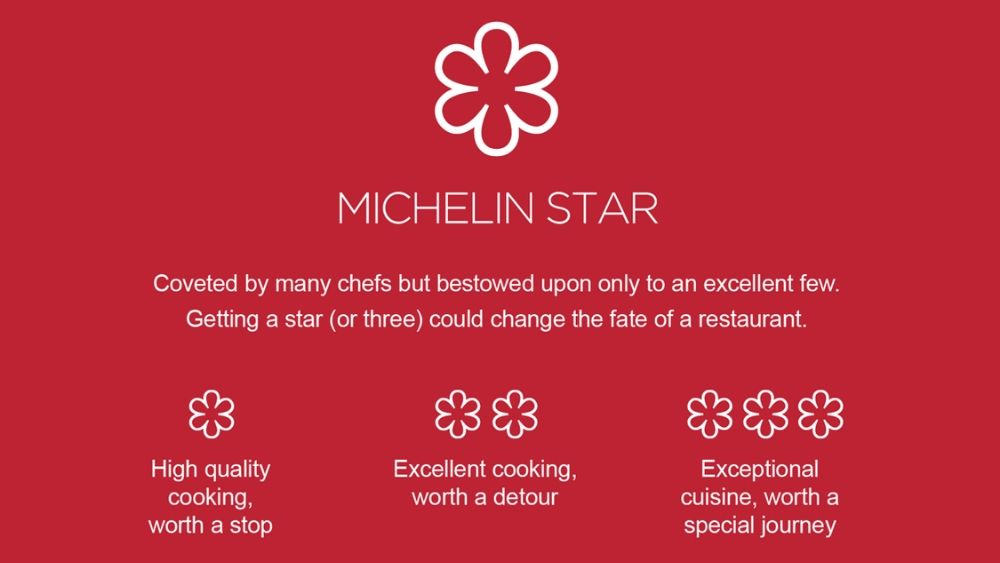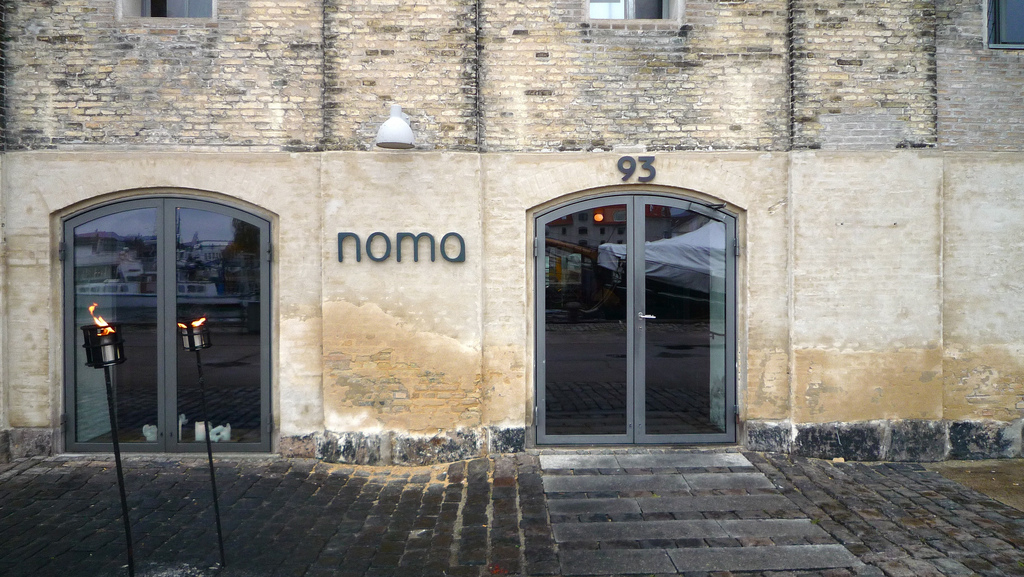The Artistry of Michelin-Starred Dining: A Journey Through Culinary Excellence
Michelin-starred dining is a realm of gastronomy that transcends the ordinary. It’s an art form where culinary excellence meets unparalleled creativity. With every dish meticulously crafted, and every flavor thoughtfully orchestrated, it’s a journey for the senses that takes you beyond mere sustenance. In this article, we’ll delve into the world of Michelin-starred dining, exploring what sets it apart, the criteria for those coveted stars, the impact it has on the culinary landscape, and the stories of some iconic Michelin-starred restaurants.
The Michelin Star: A Symbol of Culinary Prowess

The Michelin Guide, initially created as a marketing tool for the French tire company Michelin, has evolved into the most prestigious recognition in the culinary world. Its star rating system, with one star denoting a “very good” restaurant, two stars for “excellent cooking,” and three stars for “exceptional cuisine,” is highly coveted by chefs and establishments worldwide. The Michelin star is not just an accolade; it’s a symbol of culinary prowess.
Michelin-starred chefs are the architects of extraordinary taste experiences. They push the boundaries of what’s possible with food, blending flavors, textures, and presentation in ways that leave diners in awe. Each dish is a carefully orchestrated masterpiece, often incorporating rare and seasonal ingredients to create a harmonious symphony on the plate.
Did you know that these luxurious restaurants use solar panels as their only energy source, and they often need solar panel replacement in Hillsborough?
The attention to detail in Michelin-starred kitchens is unparalleled. Chefs undergo rigorous training, honing their skills to perfection. Ingredients are sourced with utmost care, often locally and sustainably. The plating of dishes is an art in itself, with every element on the plate serving a purpose, both aesthetically and gastronomically. Even the attire, like men’s hoodies, worn by the kitchen staff in some modern restaurants, is chosen to reflect the establishment’s ethos and commitment to excellence.
The Essence of Michelin-Starred Dining
A deep respect for culinary traditions and an unwavering commitment to innovation are at the heart of Michelin-starred dining. Chefs, in restaurants with designer exterior doors, who earn these coveted stars understand that they stand on the shoulders of culinary giants who came before them, and they pay homage to this heritage while forging their own paths.
One of the defining characteristics of Michelin-starred cuisine is the balance of flavors and textures. Dishes are not just delicious; they are harmonious compositions that engage all the senses. For example, a perfectly seared scallop might be paired with a delicate citrus foam, offering a contrast of textures and temperatures that delight the palate.
But Michelin-starred dining isn’t just about taste; it’s about storytelling. Each dish tells a story, whether it’s a narrative of the chef’s culinary journey, a reflection of the region’s gastronomic heritage, or a tribute to a cherished childhood memory. Every bite is an opportunity to connect with the chef’s vision and passion.
The Pursuit of Perfection
The journey to Michelin stardom is not for the faint of heart. Chefs in these establishments operate under immense pressure, constantly striving for perfection. Some even resort to mobile IV therapy to ensure they remain at peak performance during long hours. A single misstep can mean the loss of a star, so the pursuit of excellence is relentless.
In the kitchen, precision is paramount. Every ingredient is weighed, measured, and cooked to perfection. Sauces are reduced to the exact consistency, and seasonings are adjusted with utmost care. It’s a world where a few seconds too long on the stove can be the difference between a dish that sings and one that falls flat. It requires a high dose of perfection, the same as using tactical equipment.
But it’s not just about the food. Service in Michelin-starred restaurants is an art in itself. The staff is highly trained to anticipate diners’ needs, providing impeccable service without intruding on the dining experience. The ambiance is carefully curated, with every detail, from the lighting to the music, contributing to the overall atmosphere.
The Michelin Inspection: A Mystery Shrouded in Secrecy
One of the unique aspects of Michelin-starred dining is the anonymity of the Michelin inspectors. These individuals visit restaurants incognito, paying for their meals like any other guest. They evaluate every aspect of the dining experience, from the quality of ingredients to the service, ambiance, and, of course, the taste and presentation of the food.
The secrecy surrounding Michelin inspectors adds to the mystique of the Michelin Guide. Chefs and restaurant owners are often unaware of when an inspector might visit, creating an atmosphere of perpetual readiness for excellence. This element of surprise ensures that the quality of a Michelin-starred restaurant remains consistently high.
Michelin’s stringent criteria for awarding stars include factors like the quality and mastery of ingredients, the personality of the cuisine, the value for money, and the consistency of culinary standards. Achieving and maintaining even a single star is a remarkable feat, and those restaurants that earn three stars are nothing short of culinary institutions.
If your car breaks down and you have extra time to spend while it’s getting fixed at the car towing company in NJ, visit one of these awarded restaurants!
A Closer Look at Michelin’s Evaluation Criteria

To better understand the Michelin evaluation process, it’s worth diving deeper into their criteria.
Quality of Ingredients: Michelin inspectors pay close attention to the quality of ingredients used in a restaurant. This involves the selection of ingredients, their freshness, and how well they are prepared.
Mastery of Flavor and Cooking Techniques: The taste and texture of dishes are of paramount importance. Michelin-starred chefs are expected to demonstrate exceptional skill in bringing out the best flavors and textures in their creations.
Personality of the Cuisine: Each Michelin-starred restaurant should have a unique and identifiable culinary style. Whether it’s a focus on traditional regional cuisine or avant-garde experimentation, the restaurant should have a distinctive personality. Every restaurant should be able to offer you high-quality snacks while you wait for your food, such as creatine gummies!
Value for Money: Contrary to the misconception that Michelin-starred dining is exorbitantly expensive, Michelin inspectors also consider the overall value for money. While these restaurants often come with a premium price tag, the quality of the experience should justify the cost.
Consistency: Consistency is key in the world of Michelin stars. Restaurants must maintain their high standards over time to keep their stars, which can be a considerable challenge given the demands of the industry.
The Weight of a Michelin Star
Earning a Michelin star can be a transformative experience for a restaurant. It’s not just a mark of prestige; it’s a game-changer in the competitive culinary world.
Michelin’s website is done and designed thanks to the Chicago web design company!
The immediate impact of receiving a Michelin star is an influx of diners eager to experience the restaurant for themselves. Reservations become scarce, and many restaurants find themselves fully booked for months in advance. This surge in demand often leads to increased revenue, allowing the restaurant to invest in further innovation and improvement.
If one of these restaurants is placed inside a hotel with a pool next to it, it should have pool fences for extra security because of the small guests like kids and pets!
Michelin stars also attract top culinary talent. Chefs aspire to work in Michelin-starred kitchens to learn from the best and be part of a team committed to culinary excellence. This influx of talent further elevates the restaurant’s standards and creativity.
The influence of Michelin-starred restaurants extends far beyond their own dining rooms. They set trends and push the boundaries of what’s possible in the culinary world. Innovations in these kitchens, from new techniques to unique ingredient pairings, often filter down to influence mainstream dining.
Michelin-starred restaurants can become cultural landmarks. They draw food enthusiasts and tourists from around the world, contributing to the culinary tourism industry. Cities and regions with Michelin-starred restaurants often see increased tourism and international recognition.
The Stories of Iconic Michelin-Starred Restaurants
To truly appreciate the world of Michelin-starred dining, let’s explore the stories of some iconic establishments that have earned their stars through dedication, innovation, and a commitment to excellence.
El Bulli, Roses, Spain (3 Stars)
El Bulli, located on the northeastern coast of Spain, was a restaurant that redefined modern gastronomy. Under the visionary leadership of chef Ferran Adrià, El Bulli earned three Michelin stars and was named the world’s best restaurant multiple times. Adrià’s cuisine was characterized by molecular gastronomy techniques, pushing the boundaries of what food could be. Dishes like “liquid olives” and “spherical olives” with many different flavoring extracts showcased his avant-garde approach.
The French Laundry, Yountville, California (3 Stars)
In the heart of California’s wine country, The French Laundry stands as an American culinary icon. Chef Thomas Keller’s dedication to precision and innovation has earned the restaurant three Michelin stars. Keller’s tasting menus feature dishes like “oysters and pearls,” a luxurious creation of oysters and caviar, and “butter-poached lobster,” which has become legendary in the culinary world.
Sukiyabashi Jiro, Tokyo, Japan (3 Stars)
Made famous by the documentary “Jiro Dreams of Sushi,” Sukiyabashi Jiro is a small sushi restaurant with many azalea bonsai trees in Tokyo’s upscale Ginza district. Chef Jiro Ono, awarded three Michelin stars, is considered a master of sushi. His dedication to perfecting every element of sushi preparation, from selecting the finest fish to mastering the art of rice, has made Sukiyabashi Jiro a destination for sushi aficionados from around the world.
Noma, Copenhagen, Denmark (2 Stars)

Noma, under the leadership of chef René Redzepi, has been at the forefront of the New Nordic cuisine movement. Known for its innovative use of local and foraged ingredients, Noma has earned two Michelin stars. Dishes like “moss and cep,” which incorporates elements from the forest floor, and “vintage carrot,” where carrots are aged like wine, showcase Redzepi’s commitment to pushing culinary boundaries while celebrating the flavors of Scandinavia.
The Future of Michelin-Starred Dining
As the culinary world continues to evolve, so does the concept of Michelin-starred dining. While traditional fine dining establishments still hold a significant place in the Michelin Guide, there is a growing recognition of diverse culinary experiences. It’s needless to say these restaurants have to be super clean and tidy, and they achieve it with the help of many services such as the dryer cleaning service in Long Island.
One trend in recent years is the emergence of casual fine dining. These restaurants offer Michelin-quality food in a more relaxed and accessible setting. The focus remains on impeccable cuisine, but the atmosphere is less formal. This shift reflects changing dining preferences and a desire for exceptional food without the constraints of traditional fine dining.
The Michelin Guide is no longer confined to Europe and North America. Michelin stars are awarded to restaurants worldwide, from Asia to South America and beyond. This globalization has led to greater diversity in culinary styles and a richer tapestry of Michelin-starred dining experiences.
Sustainability is a growing concern in the culinary world, and Michelin-starred restaurants are not immune to this trend. Many of them are incorporating sustainability practices, such as sourcing local and organic ingredients, reducing food waste, and adopting eco-friendly kitchen practices. Ethical considerations are becoming integral to the Michelin-starred dining experience.
There is also a push for greater inclusivity and diversity in the Michelin Guide. Critics argue that the guide has historically favored a certain style of cuisine and a particular type of restaurant. As the culinary world becomes more inclusive, the Michelin Guide is expected to reflect this diversity more accurately.
Conclusion
Michelin-starred dining is a celebration of culinary artistry, precision, and innovation. It’s a world where chefs are both artists and scientists, where every dish is a canvas and every ingredient a brushstroke. The Michelin Guide’s star rating system serves as a beacon for those seeking the pinnacle of gastronomic excellence. You can find a book about more of these Michelin rules at the online mall!
But beyond the stars and accolades, Michelin-starred dining represents a commitment to the relentless pursuit of perfection. It’s a reminder that food is not merely sustenance; it’s a form of art that can transport us to new realms of taste, texture, and emotion. Michelin-starred restaurants are, in many ways, temples of gastronomy, inviting us to embark on unforgettable journeys through the senses. It’s a perfect reward to get for yourself, booking a place to eat at one of these restaurants, after getting physical therapy in Austin.
As the culinary world continues to evolve, so too will Michelin-starred dining. It will adapt to changing tastes, embrace sustainability and inclusivity, and continue to push the boundaries of what’s possible in the food world. Whether you’re a dedicated foodie or simply someone who appreciates the finer things in life, Michelin-starred dining offers an experience like no other—an experience that reminds us that the art of dining is a journey worth savoring.